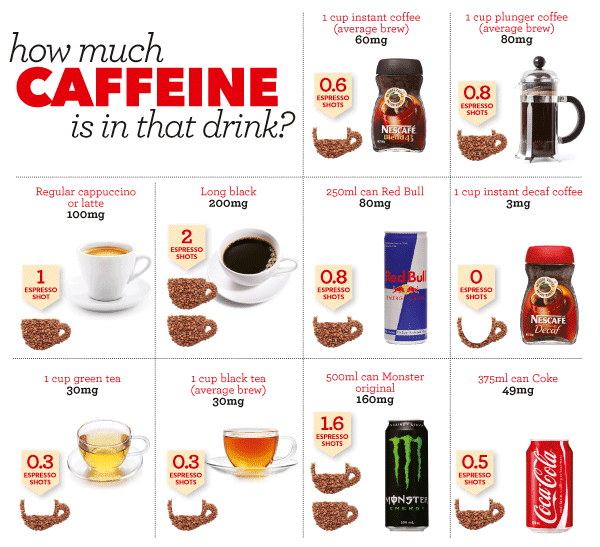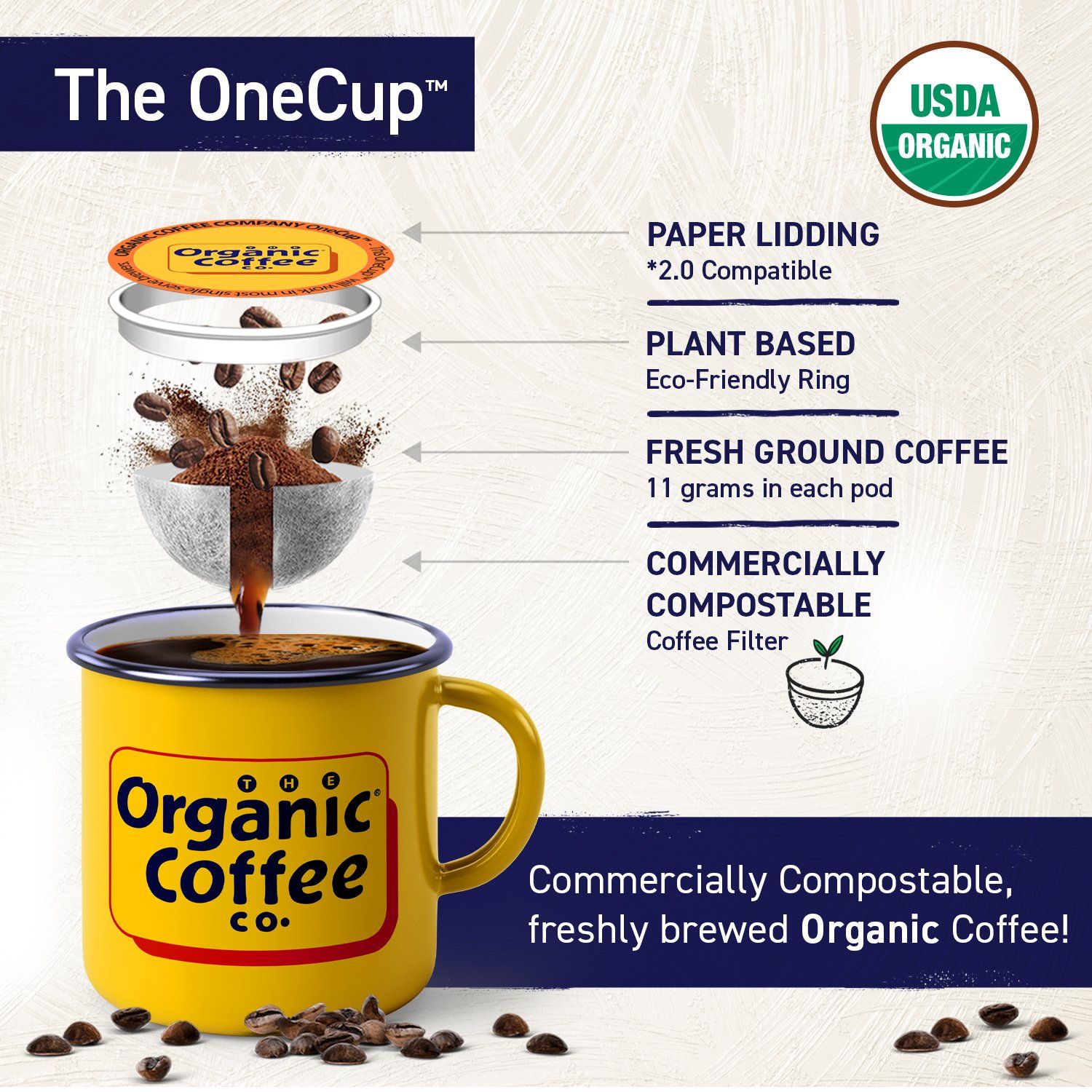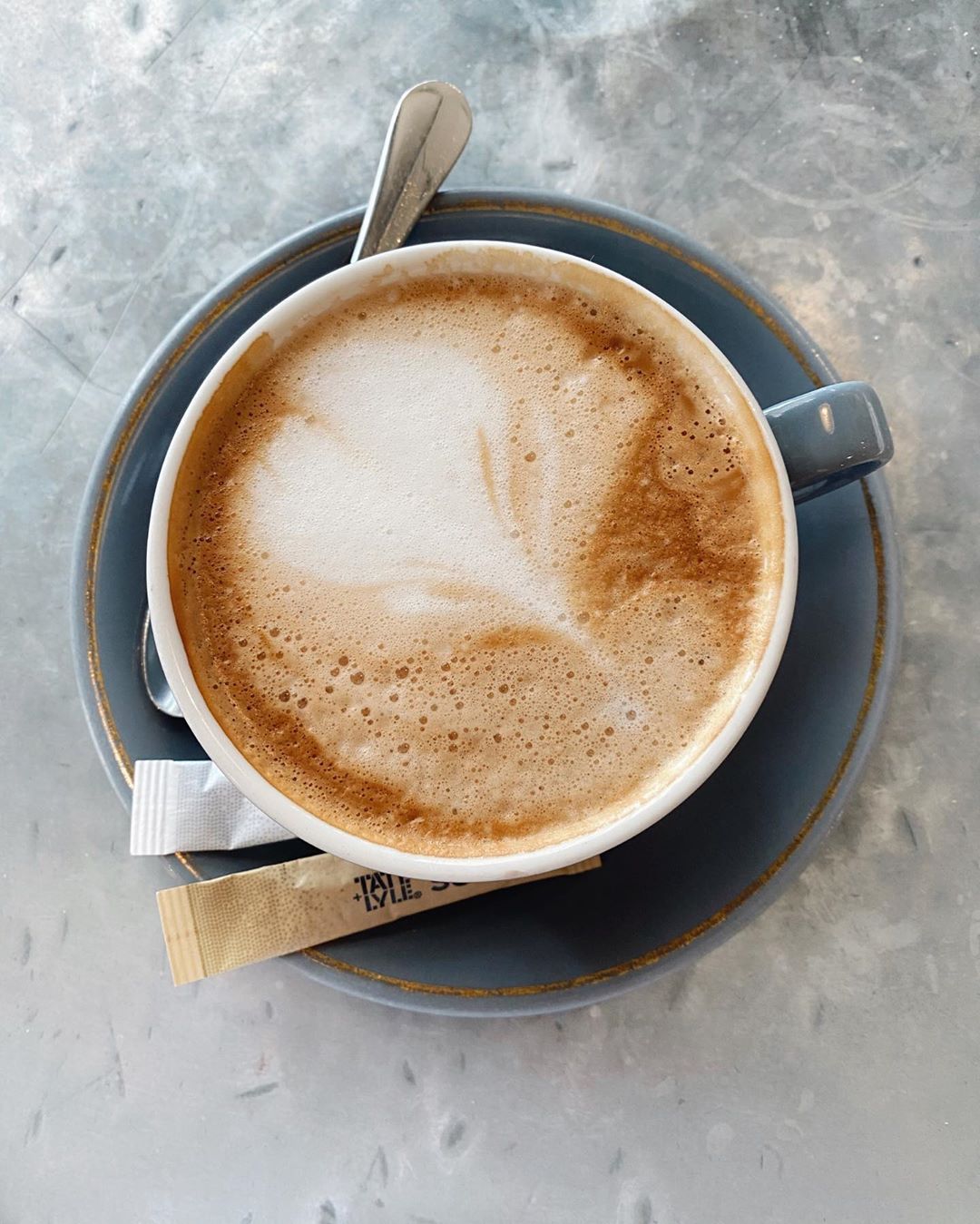Spilling The Beans: How Much Caffeine Is Too Much
According to scientists at the FDA, caffeine can be part of a healthy diet for most people, but too much caffeine may pose a danger to your health.
Do you drink just one cup of coffee or tea first thing in the morning, hoping the caffeine in it will jump-start your day? Do you follow it up with a caffeinated beverage or two and then drink several more cups of coffee throughout the day?
Does it matter?
According to scientists at the FDA, caffeine can be part of a healthy diet for most people, but too much caffeine may pose a danger to your health. Depending on factors such as body weight, medications you may take, and individual sensitivity, too much can vary from person to person.
Learn more about caffeine in the following questions and answers.
Is 200mg Of Caffeine A Lot
If you go by the current average, 200mg of caffeine is about half of what many consider a safe amount of daily caffeine consumption. A 200mg serving size of caffeine can trigger the benefits that individuals expect from the best caffeine. 200mg of caffeine is considered safe and is not a harmful dosage level.
How Much Caffeine In Coffee Beans
Coffee beans available in the market and all around the world are of two types that is Arabica and Robusta.
Caffeine acts as a natural pesticide which helps in protecting the plants from various pest and pathogens.
The caffeine content in Arabica coffee beans is half the amount of caffeine found in Robusta coffee beans.
Also Check: Does Caffeine Cause Dry Eyes
How Much Caffeine Is Too Much
There is no doubt in the fact that taking caffeine helps a person to remain awake for a long time as it competes with the molecules that promote sleepiness. But consuming too much caffeine can be harmful to your body.
About 400 mg of caffeine in a day by an adult is considered to be safe by many health experts.
Although this figure does not go for kids, pregnant women, and lactating mothers. They should consult with their doctors about how much caffeine is sufficient for them.
How Much Caffeine Is In Cocoa Beans

100 grams of cocoa beans contain 230 mg of caffeine. However, processed Cocoa Nibs contain only 12 mg of caffeine per 1 tablespoon.
If you like to sweeten your life the darker the chocolate, the higher the caffeine content:
The white one does not contain any or only minimal traces of caffeine. Milk chocolate contains about 9 mg and dark one 12 milligrams.
You May Like: Nespresso Vertuo Pods Sam’s Club
How Much Caffeine In One Coffee Bean
To answer how much caffeine is in a cup of coffee, we must first start at the bean. In its most basic form, coffee is a fruit on a tree containing a nut . These beans are then dried and roasted to create the typical black-brown nuggets we all recognize.
Coffee beans might contain more caffeine than after brewing. The average coffee bean contains about 10mg of caffeine, which means eating ten of them is about the same as the averagely brewed cup of coffee. This is because, during the brewing process, a lot of chemicals are lost.
The beans themselves might be easier for your body to process than the drink. Two academic studies found that consuming the beans without brewing led to a quick absorption into the bloodstream. It also contains less acid and is easier on the stomach.
Today, consuming coffee beans alone has become much more popular. Reputable stores like Starbucks sell chocolate-covered coffee beans as a snack. If you want the boost of caffeine without drinking coffee, eating just the beans might be an excellent alternative for you.
Beans And Caffeine Percentages
Coffee Detective provides a list of the various varieties of beans and what their percentage of caffeine is. One of the most popular coffees in North America, Colombian, has high amounts at 1.37 percent, the website says. Tanzania Peaberry coffee beans have even more, at 1.42 percent. By contrast, Mocha Mattari from Yemen has only 1.01 percent of caffeine.
Some of the Arabica coffee beans or grounds and their percentage of caffeine, in ascending order, include:
Zimbabwe 1.10
Viter Energy Mints contain 40 mg of caffeine per mint, plus B vitamins, and the mintiness to freshen your breath.
And Viter Energy Mints come in a variety of flavors including cinnamon, chocloate mint, wintergreen, and extra strength peppermint.
Energy drinks vary from 300 mg of caffeine per 16-ounce can of Bang to 50 mg per 12-ounce can of Starbucks Refresher.
Don’t Miss: How To Remove Set In Coffee Stains
Where Can We Find Caffeine
In nature. About 60 species, from beans, fruits, nuts, to leaves, contain caffeine the main ones being:
Coffee Beans
In general, Robusta beans contain more caffeine than Arabica beans
Cocoa Beans
These seeds from the cocoa pod contain two chemical substances, theobromine, and caffeine. I will talk about both of them later in the article
Tea Leaves
Did you know that tea is harvested by hand? Tea also contains 2 main substances, caffeine, and theine, plus several vitamins, minerals, fluorine, etc.
Kola Nuts
Kola nuts are mainly famous for being a flavoring ingredient in our soda drinks. The caffeine we ingest from Coke comes from this plant. Kola nut is also an ingredient in pharmaceuticals and herbal supplements.
Yerba Maté
This plant native to South America got popular because of indigenous people steeping it and preparing a healing drink. It is still very popular in Brazil, Argentina, or Paraguay.
This plant is high in antioxidants and has anti-carcinogen effects. Now, you can even get a bottled Maté drink in a shop.
Yaupon Holly
This plant with unpleasantly sounding name, Ilex vomitoriais, is native to the SouthEastern United States. Native Americans used it to prepare a tea full of antioxidants.
Guarana Berries
Guarana is a popular ingredient of energy drinks because it reduces fatigue.
Guayusa
A drink from this plant was called the night watchman by indigenous hunters of Amazon Forest. Nowadays it is widely consumed in Ecuador.
How Much Caffeine Is In A Cup Of Copper Moon
An average 8 oz cup of Copper Moon Coffee has between 90120 milligrams of caffeine. As we shared above and elsewhere about Light, Medium, and Dark Roast Coffee, darker roasts have lower caffeine, and lighter roasts have higher caffeine. But roughly speaking, on average our Dark Roast has around 90 milligrams, our Medium Roast has about 100 milligrams, and our Light Roast has up to 120 milligrams of caffeine.
While all of the factors above are involved in making up the caffeine content in a cup of coffee, we based our numbers on a standard, pour-over method of brewing coffee. Keep in mind that the longer you pour hot water over your coffee and the finer the grind will both contribute to the caffeine level in your cup. It is why espresso-based drinks typically have a higher concentration of caffeine per serving due to their brewing method and the density of coffee. For example, one 2 oz Double Espresso shot has about 80 milligrams of caffeine. However, most Americans typically drink 8 oz of coffee or more.
Also Check: Nespresso Lattissima Touch Original Espresso Machine
How Many Mg Of Caffeine In One Cup Of Coffee
But how long do these feelings last? The answer: Caffeine lasts in our systems anywhere from 4 to 6 hours on average, and it has a half life of about 5 hours. That means if you consume 200 milligrams of caffeine, after 5 hours, you’ll still have 100 milligrams left in your body.
How much is 200 mg of caffeine?The ACOG recommends limiting your caffeine intake to 200 mg or less if you are pregnant or trying to become pregnant . Depending on the type and preparation method, this is equivalent to about 12 cups of coffee or about 24 cups of brewed tea per day .
Is 300 mg of caffeine a lot?
For now, you should stick to moderate amounts of caffeine. For an adult, that means no more than 300 mg daily, which is three 6-ounce cups of coffee, four cups of regular tea, or six 12-ounce colas.
Is 300 mg of caffeine a lot for a 15 year old?
For kids and teens, the American Academy of Pediatrics suggests caution. Adolescents ages 12 to 18 should cap daily caffeine intake at 100 mg . For children under 12, there’s no designated safe threshold.
Is 1000mg of caffeine a lot?
Extremely high daily intakes of 1,000 mg or more per day have been reported to cause nervousness, jitteriness and similar symptoms in most people, whereas even a moderate intake may lead to similar effects in caffeine-sensitive individuals .
How Many Milligrams are in a Cup?
| Volume in Cups: |
|---|
How Do You Brew Your Coffee
If youve ever met a barista, you know there are several different brewing methods to transfer beans to mug. In America, the standard cup of coffee is from a filter system. This involves a disposable or cleanable coffee filter with coffee inside slowly dripped with hot water.
This coffee is a lot more watery and has less strength than its concentrated European counterparts. In Europe, most coffees are espresso-based. This means that all coffee starts as espresso .
After that, they can add milk to make a latte or more water to make a lungo or Americano. However, the addition of milk does not reduce the level of caffeine. It will dilute the coffee so you wont have as much per sip, but the total caffeine levels will remain the same in the cup.
The same cannot be said for water. Water has a strong diluting effect on caffeine, and adding it to your cup of coffee will reduce caffeine levels by up to 50%. This is why the americano style of coffee is much weaker than straight espresso.
This also means that iced coffee beverages are much weaker due to their water content. There are also other methods of coffee brewing like the French press, the Italian Moka pot, and the Aeropress, which produce different levels of caffeine.
Read Also: Where To Buy Fresh Coffee Beans Online
The Bottom Line: Caffeine In Coffee
How much caffeine in a cup of coffee depends on several factors, including brewing method, coffee type, roast, grind, and serving size.
A standard brewed coffee contains, on average, 95mg of caffeine per cup, a latte or a double shot of espresso has around 120mg of caffeine per cup, and some coffees with even higher caffeine content such as cold brew or Turkish coffee can contain up to 200mg of caffeine.
About the author
Absorption And Metabolism Of Caffeine

The chemical name for the bitter white powder known as caffeine is 1,3,7 trimethylxanthine. Caffeine is absorbed within about 45 minutes after consuming, and peaks in the blood anywhere from 15 minutes to 2 hours. Caffeine in beverages such as coffee, tea, and soda is quickly absorbed in the gut and dissolves in both the bodys water and fat molecules. It is able to cross into the brain. Food or food components, such as fibers, in the gut can delay how quickly caffeine in the blood peaks. Therefore, drinking your morning coffee on an empty stomach might give you a quicker energy boost than if you drank it while eating breakfast.
Caffeine is broken down mainly in the liver. It can remain in the blood anywhere from 1.5 to 9.5 hours, depending on various factors. Smoking speeds up the breakdown of caffeine, whereas pregnancy and oral contraceptives can slow the breakdown. During the third trimester of pregnancy, caffeine can remain in the body for up to 15 hours.
People often develop a caffeine tolerance when taken regularly, which can reduce its stimulant effects unless a higher amount is consumed. When suddenly stopping all caffeine, withdrawal symptoms often follow such as irritability, headache, agitation, depressed mood, and fatigue. The symptoms are strongest within a few days after stopping caffeine, but tend to subside after about one week. Tapering the amount gradually may help to reduce side effects.
Don’t Miss: What Is The Best Container To Store Coffee
Does A Medium Roast Have More Caffeine Than A Dark Roast
Since coffee roasting only marginally decreases the amount of caffeine, a light roast, medium and dark roast will have negligible differences in caffeine content. There are myths that go both ways, with people claiming light roasts have more caffeine , and others claiming dark roasts have more caffeine , but good old science comes to the rescue here:
Caffeine did not undergo significant degradation with only 5.4% being lost under severe roasting.
This is further offset by the fact that green coffee loses anywhere from 10%-20% of it’s weight during the roasting process – meaning darker roasts may or may not have slightly more caffeine when comparing exact weights after roasting.
In general, however, it is true that a cup of regular Drip-Brewed, Arabica coffee with a medium roast will have about 120 milligrams of caffeine, and that a 30 ml shot of espresso with an espresso roast and Arabica coffee beans will have about 120 milligrams of caffeine.
Main Benefits Of Caffeine
The amazing taste of coffee is a benefit, too. I am a coffee geek after all. To be honest, I do not write down my caffeine intake, I just wing it and listen to my body.
Read Also: What Are The Different Flavors Of Coffee
How Much Caffeine In 20 Oz Of Coffee
20 oz of coffee is the largest serving cup for coffee that is used to serve latte coffee which gives space for doing some creative work for the proper presentation of coffee.
With such a larger size the mg caffeine in a cup of coffee also increases and it is advised to consume 2 cups of such a large cup of coffee to keep the caffeine level in control.
Caffeine in 1 cup of coffee with this capacity is given below.
- Brewed coffee = 240 mg of caffeine
- Espresso = 1202 mg of caffeine
- Instant coffee = 147 mg of caffeine
- Latte = 192 mg of caffeine
Can I Test The Caffeine Content Of My Coffee
Most grocery stores stock caffeine-testing strips, but you can order them from a reputable online seller if your local store does not carry them. Be sure to test your strips on black coffee to ensure that the test is not corrupted by milk or sugar.
Soak the strip for 30 seconds, and then check the lines marked “D” or “C.” When the “C” line is darker, beverages contain less than 20mg. of caffeine, while a bolder “D” line indicates more than 20mg. of caffeine. If you receive unclear results, try again.
Read Also: Where Can I Buy Stok Coffee
Caffeine In Your Favorite Coffee Drinks
These caffeine levels in popular coffee preparations are commonly agreed on, and make a good starting point for determining your caffeine consumption. As youll see, the brewing method plays a decisive role:
- Percolated coffee, 8-ounce serving 200 mg caffeine
- Filter or drip coffee, 8-ounce serving 95-165 mg caffeine
- French press coffee, 8-ounce serving 107 mg caffeine
- Espresso, 1-ounce shot 47-64 mg caffeine
- Cold brew coffee, 12-ounce serving 150 mg caffeine
You May Decrease Your Risk Of Getting Alzheimer’s Disease
Almost two-thirds of Americans living with Alzheimers disease are women. But the caffeine in two cups of coffee may provide significant protection against developing the condition. In fact, researchers found that women age 65 and older who drank two to three cups of coffee a day were less likely to develop dementia in general.
Also Check: How Much Caffeine Is In French Vanilla Cappuccino
Coffee Addiction Truth Or Misconception
According to the criteria of the World Health Organization, coffee does not create an addiction. However, it triggers a psychological effect: coffee stimulates pleasant sensations that cause it to become a source of comfort on a regular basis.
There are some environmental factors that may cause increased coffee consumption, which does not necessarily mean youre addicted.
How Long Symptoms Last

According to the American Academy of Sleep Medicine, caffeines half-life is up to 5 hours. Half-life is the amount of time it takes for a quantity of a substance to be reduced to half the original amount.
So if youve consumed 10 milligrams of caffeine, after 5 hours, youll still have 5 mg of caffeine in your body.
The effects from caffeine reach peak levels within 30 to 60 minutes of consumption. This is the time youre most likely to experience the jittery effects of caffeine.
You might also urinate more due to the liquid volume being ingested and caffeines mild diuretic effect.
The other half of caffeine that you consume can last much longer than 5 hours.
People with caffeine sensitivities might feel symptoms for several hours or even a few days after consumption.
Due to the long-term effects of caffeine, the American Academy of Sleep Medicine recommends that you dont consume it at least six hours before bedtime. So if you go to bed at 10:00 p.m., you should have your last round of caffeine no later than 4:00 p.m.
Don’t Miss: How To Make Iced Coffee With Almond Milk